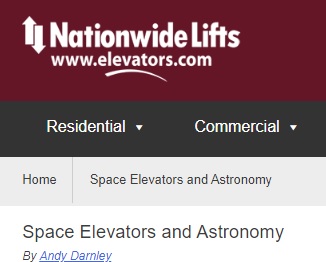On the Web:
“Hey, Sky! Take off your hat, I'm on my way!”
What follows is a series of outside resources sorted by topic that ought to cover just about every aspect of the hobby a novice, or even intermediate astrophotographer might need. If not, the info you need is likely only one or two degrees of separation away (I hope). In any event, I plan on expanding this library indefinitely! The links are embedded in the thumbnails and titles for each resource.

*Fwoooooooooooosh!*
Choosing the Right Time and Place:
Looking to make your time outside count? These resources should provide everything needed for even the most anal-retentive amateur astronomer to plan the time and place they need to get to in order to make good observations and images.
World Light Pollution Map:
While other such websites are out there, this one provides the most comprehensive and up-to-date look I know of for every measure of sky brightness available for any location you can find on the globe, along with road maps, satellite imagery, elevation data, highly accurate site-specific data from sky-quality meters.
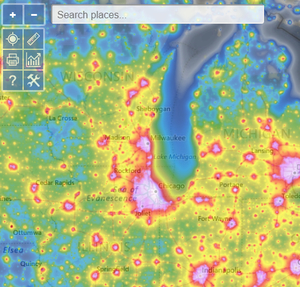
Alan Rahill & Attila Danko's Clear Sky Charts:
For those in the U.S., Canada, and some regions of Mexico: this website provides 48 hours of forecasting tailored specifically for astronomers, listing typically absent statistics like ‘seeing’ (turbulence from shearing air masses, important for planetary imaging), transparency (can vary even in cloudless skies, important for deep-sky imaging), and sky brightness from the moon.
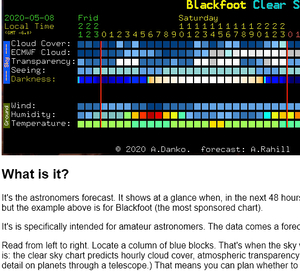
NOAA Graphical Forecasts for the CONUS Region:
While limited only to the continental U.S., this government meteorological service provides the most detailed forecast maps possible up to a week in advance, according to every common metric.
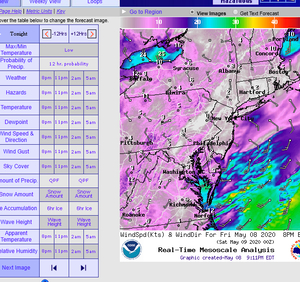
The Weather Channel:
Provides worldwide forecasts that are quick and easy to interpret, and available on hourly, 5-day, and (naturally dubious) 10-day scopes.
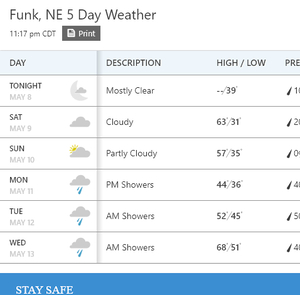
Timeanddate.com:
A site that provides everything but the kitchen sink, and notably, key metrics unavailable in the above resources such as: moonrise/moonset/moon phase times and dates, information on the time/place of eclipses, highly detailed information on the yearly average climate of any region at any time of year, and a dizzying array of time and date calculators.
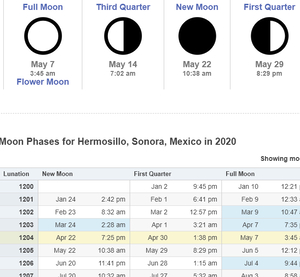
Weatherspark.com:
For long trips to dark-skies or planning other viewing events, it helps to know what times of year are liable to provide good viewing on a given stretch. This site contains climate averages for just about any dry land on Earth, in an easy to navigate and graphically tidy set of graphs for a given location, and the month of the year.
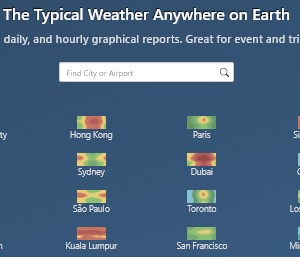
NOAA Three-Month Outlooks:
Much like the graphical 7-day forecasts a few entries back, this public service only covers the U.S. unfortunately. This is another tool for the long-term prognosticator, and assesses larger trends in the weather to forecast deviations from the mean in the three months ahead.
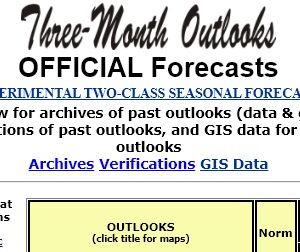
Earth.nullschool.net's 3D Weather:
A stunning graphical representation of present and past weather patterns on a 3d globe at various altitudes! It's created by supercomputers, and it shows. Useful for determining the path of high-altitude weather and air masses, which can affect atmospheric seeing, and a vital source of data for those chasing aurorae. Also just a fascinating free learning tool climatology and weather.
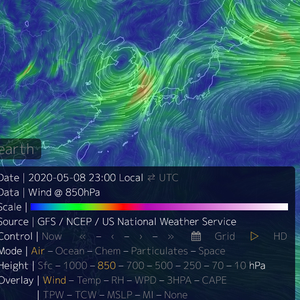
Planning for Your Target:
Have a time and place nailed down but want to know what you can see there? Maybe you have a specific target in mind already but want to work back from there. Either way, these are the resources to check.
Stellarium's Astronomy/Planetarium Software:
Among the best planetarium software there is for knowing what objects will be visible where and whenever, along with countless useful and interesting features that allow you to discover and plan exactly the shots your set-up can take, and even control the pointing of your telescope by integrating with other software (namely, APT). It’s also free!
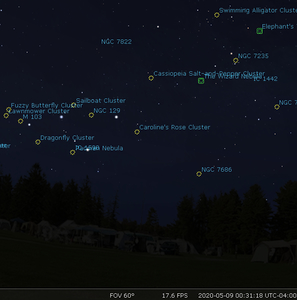
Celestia's Space Simulation Software:
Another free planetarium program that notably allows you to move your perspective to any part of the known universe. Beyond good fun, it’s useful for learning when the planets are approaching opposition (the closest point in their orbits).
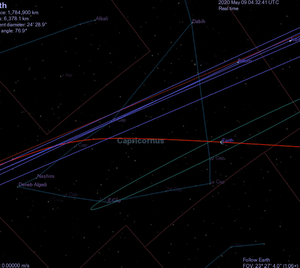
Sky & Telescope’s Interactive Sky-Watching Tools:
Useful little widgets that open right from your browser to tell you useful data like the facing of any planets with variegated surface features, the orientation of their moons at any point in time, the performance of your telescope, the position of major artificial satellites, and more!
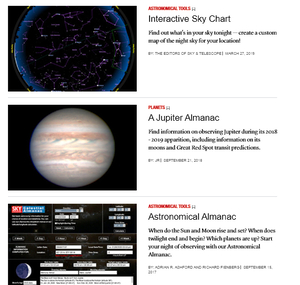
Strasbourg Astronomical Datacenter's Aladin Sky Atlas:
This awesome map of the sky is available both as a desktop program, and as a lighter, browser-based utility. It provides awesome details of the photographic and coordinate data from numerous sky surveys, and is a great way to identify even the faintest of fuzzies that come up in your deep-sky images.
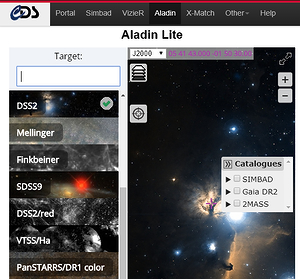
NASA’s “Spot the Station” Service:
In case Sky & Telescope’s above tools are down, or you are only concerned with the current, past, or near-future position of the I.S.S., this is a simple way to learn exactly that. Unlike the positions of distant bodies, this information also needs updating to be accurate due to the vagaries of orbital decay and maintenance of low-earth-orbits.
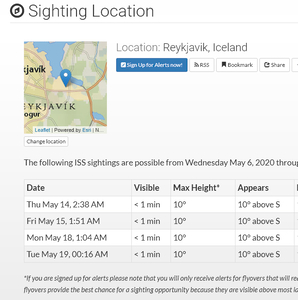
Seiichi Yoshida’s Home Page:
Seiichi Yoshida may have the graphic design sensibilities of a nascent serial killer, but this man KNOWS his comets.
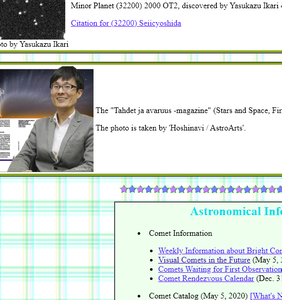
Virtual Moon Atlas:
This (free) program gets about as in depth as one can get with lunar topography without hijacking the feed of the LRO.
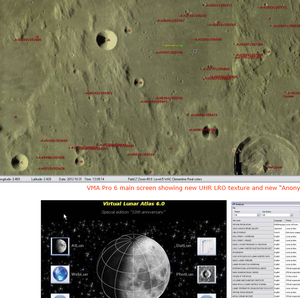
Astrometry.net’s Browser-based Plate Solving Service:
Want to figure out what you took a picture of after the fact, but don’t want to download large programs meant to do so during your imaging? This free online service will use “plate-solving” to match the stars in your images to existing maps, and tell you just where you were looking.
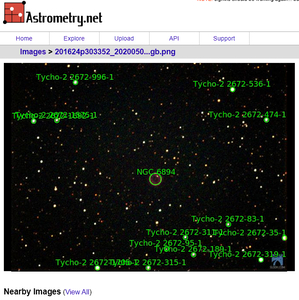
SpaceWeather.com's Information and News Feed:
A site with news and info on everything related to the closer reaches of space ("inner-outer-space"?). Up-to date info about meteor showers, auroras, solar activity, and near-earth asteroids.
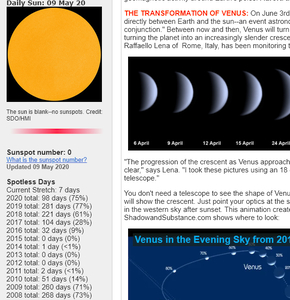
Heavenscape.com's SkyTrack Satellite Tracking Software:
While this software is still on the cusp of being republished at the time of writing, it was and will foreseeably be the end-all be-all of software for optically tracking and observing artificial satellites in Earth orbit.
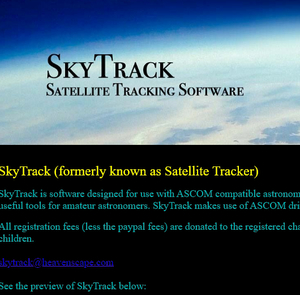
Choosing and Mastering Your Equipment:
This collection of resources is intended to help those looking for some in-depth info on different instruments, and skills they'll need to operate them.
DSLR Astrophotography Untracked:
Looking to try deep-sky-imaging with the smallest investment possible? All you really need is a digital camera with a zoom lens and adjustable exposure settings. This PDF by Erwin Matys and Karoline Mrazek details how to make that happen... but be warned: this is no less painstaking than other AP. In fact, for the same results, it’s far more work... and the results are inherently limited. Still an impressive feat for any photographer!
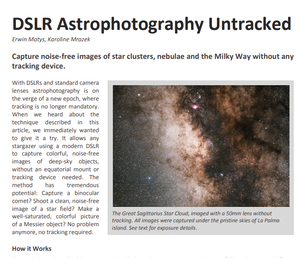
An Astrophotography Mount Performance Review:
For those looking to start serious deep-sky work, a solid equatorial mount is essential. This page has a thorough survey of many current common models, and compares them by crucial metrics. Mind, this survey skews towards higher end models, and those with tighter budgets needn’t be scared off by what they see here.
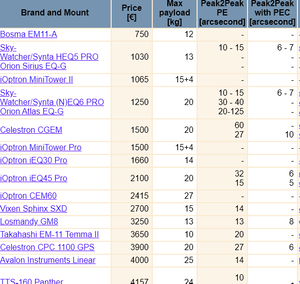
Sky & Telescope’s Guide to Choosing a Telescope:
This buyer's guide covers the main types of scope, and the pros and cons of each type for various kinds of observation.
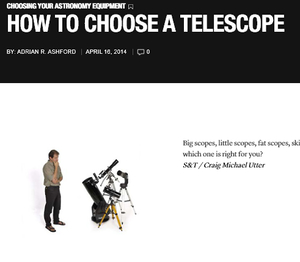
Wilcox’s Rotating Telescope Rings:
A cheap DIY way to let your optical tube easily and safely rotate in its scope rings when you need it to. The hosting site: Andy’s Shot Glass is similarly a treasure trove of info for those attempting astronomy and astrophotography on a budget.
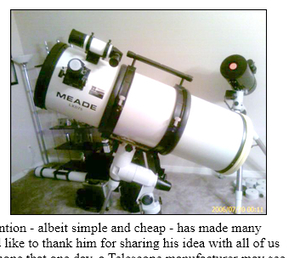
Sky at Night Magazine's Guide to Building an EQ Platform for a Dobsonian:
For those who are skilled with DIY but low on funds- this is a cheap but labor intensive way to get your Dobsonian reflecting telescope tracking the night-sky’s movement at least somewhat accurately. Unlikely to enable truly long exposures, however.

LifePixel Infrared Camera Conversions:
Standard DSLRs and mirrorless pro/’prosumer’ cameras are filtered for daytime use, and so have an integral filter to block UV/IR wavelengths that can show a lot of deep-sky detail. This site not only offers a (pricey) service to remove this filter from your camera, but provides tutorials for the daring to do so themselves.

Lorenzo Comolli’s DSLR Review for Astrophotographers:
Part of a skilled Italian astrophotographer's personal site, this page contains a survey of multiple popular DSLR/mirrorless digital cameras for traits that are useful to deep-sky astrophotographers in particular (e.g. ‘read noise’ and ‘unity gain’). These are rather advanced considerations for those looking to make every photon count.
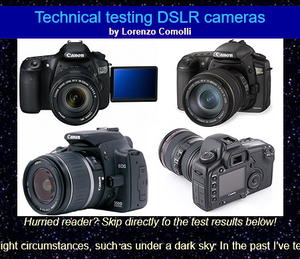
Imaging Resource's Digital Camera Tech-Specs and Reviews:
A site with a very on-the-nose name, Imaging Resource comprehensively reviews and catalogues the tech specs of most consumer digital cameras on the market.
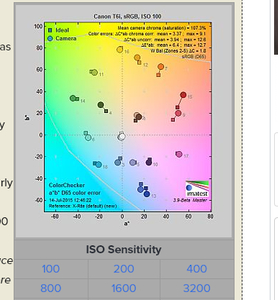
DXOMark's Digital Camera Tech-Specs and Reviews:
Another site very much like the latter, and no less useful. Those checking out cameras should remember however, that these sites are primarily focused on general camera work, and as a general rule don't include dedicated astronomical cameras, which should be highly considered for imaging set-ups.
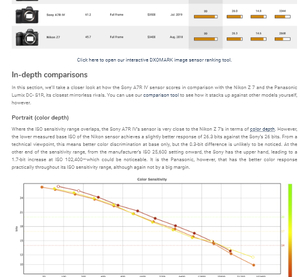
Cruxis Observatory's Telescope Mirror Cooling Calculator:
Need to know precisely how long your scope’s mirror will take to equalize with outdoor temperatures, eliminating boundary-layer distortion? This free software is for you.
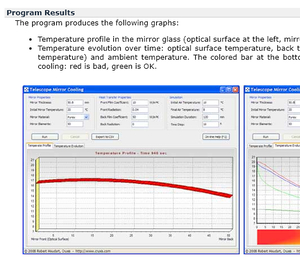
Astro-Baby's Newtonian Reflector Collimation Guide:
If you use a Newtonian reflecting telescope—as many do for the attractive cost-to-performance ratio—collimating it (re-aligning the mirrors) is an elementary part of using it and should be done regularly. This guide covers doing so by traditional means.
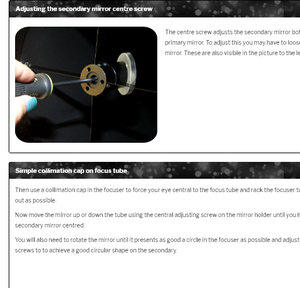
Howie Glatter’s Laser Collimation Guide:
Laser collimators have become very cheap, and save you a ton of time and effort achieving collimation with reflecting telescopes. This PDF guide tells you how to use them.
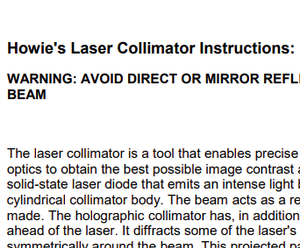
Capturing Astronomical Data:
This collection of resources is intended to provide both theory and software to assist in the most important step of astrophotography: taking the dang photos already.
Astrophotography Tool (APT) Capture and Control Software:
While many capture programs exist (Backyard EOS, NINA, Maxim DL, etc.) this one is my favorite by far. A feature-packed program with a cheap version and a free demo version (that never expires and includes most of the features). For those that use a laptop to control their mount, camera, and/or guider, this program integrates and unifies the control of those elements, and includes many tools to assist every step of the way.
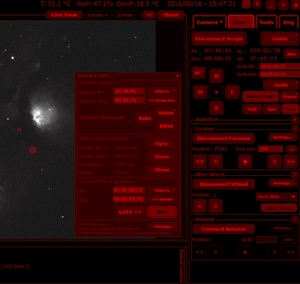
Sharpcap/Sharpcap Pro Capture Software:
This is a fairly no-frills capture software, made especially for USB-tethered astronomy cameras. It's only fairly no-frills however, because it sports one conspicuously excellent frill: the paid version "Sharpcap Pro", at 10.00 GBP per year, contains a polar alignment routine that is among the most efficient and intuitive of its kind. Works best using an autoguider camera and a guidescope around 250mm or lower.
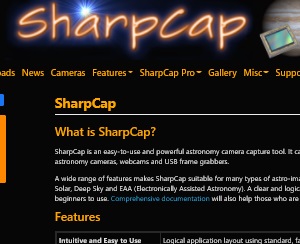
PHD2 Auto-Guiding and Alignment Software:
Serious deep-sky imagers nearly all eventually make the step of incorporating a second, smaller coaxial camera that watches a star at lower magnification and corrects for the tiniest of periodic errors in their mount’s equatorial tracking with guide pulses. This software is what makes it happen, and includes tools that use your autoguider to drastically simplify the process of polar alignment.
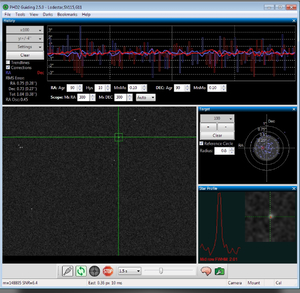
Practical Astrophotography’s Crash Course on Calibration Frames:
These are photos or 'frames' specially taken for each imaging session—meant to capture only the main three sources of ‘noise’—and subtract them from the final image. They make a tremendous difference, and are indispensable for all levels of deep-sky imaging. The site itself is replete with such brass-tacks, informative articles on AP. If you don’t know what flat frames, dark frames, and bias/offset frames are, start here.
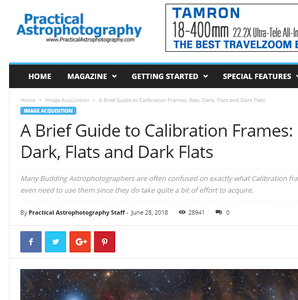
DSLR-Astrophotography’s Guide to Exposure Length and Signal-to-Noise Ratio:
This entire website is a top notch resource for AP with a prosumer digital camera, though this article stands out as the best on the following question by my reckoning: how do you optimize the length of your exposures to get the most signal for your time spent imaging? How indeed. Find out here.
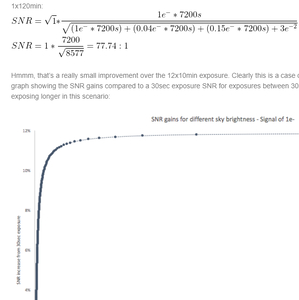
Giovanni Benintende's All-Sky Plate-Solving Software:
Compares your images to star maps to tell you where your scope is pointed, can integrate directly with APT.
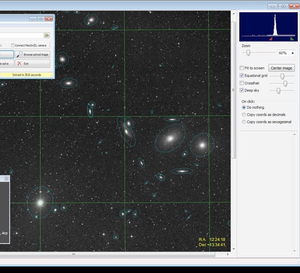
PlaneWave Instruments PlateSolve2 Plate-Solving Software:
A faster and more precise plate solver, but first requires your scope to be pointed at roughly the right area of sky. Also can integrate directly with APT.
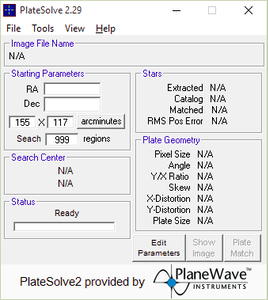
HNSky's Astrometric STAcking Program (or "ASTAP"):
This program does it all. I have totally forsaken the previous two plate solving programs in favor of this, but variety is the spice of life, so give them all a try and prove me right.
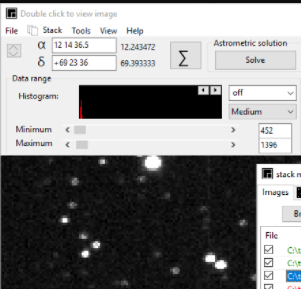
Planetary Image Processing:
This is a collection of software that is useful expressly for the processing of Solar System Object (SSO) imagery.
Planetary Imaging Pre-Processor:
For all plantary photography, but espectially for those who take planetary data in video format as most do, this (free) program sifts through and picks the best frames to feed into your stacking program.
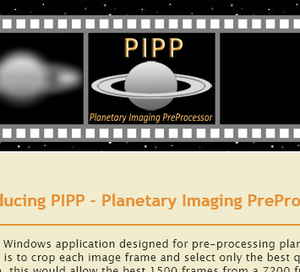
AutoStakkert! Planetary Image Stacker:
A (free) program that pulls the least distorted parts from a series of planetary images, before combining them into one very superior image.
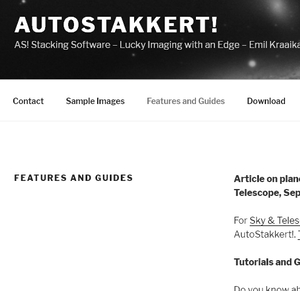
Registax Planetary Image Stacker:
A (free) program which does the same as the above, slightly less well. However, it has a “wavelet” detail filter that it very powerful, and worth using on what comes out of AutoStakkert. It also does Lunar surface features very capably.
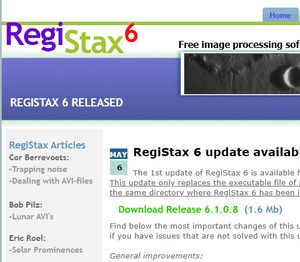
WinJUPOS Planetary De-Rotation Software:
If you are capturing data from a planet for any appreciable length of time, the planet’s rotation will blur the resulting stacked image. This (free) program intelligently “derotates” those images, and is a must for serious planet-killers.
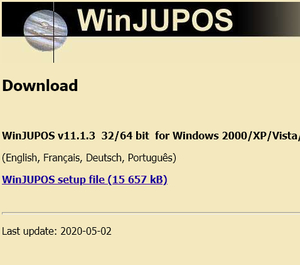
Deep-Sky Image Processing:
This is a collection of software and tutorials and that are useful primarily for the processing of Deep-Sky Object (DSO) imagery.
DeepSkyStacker Image Stacking Software:
The definitive freeware for stacking deep-sky object images. Makes the process easy, and allows a decently granular degree of control.
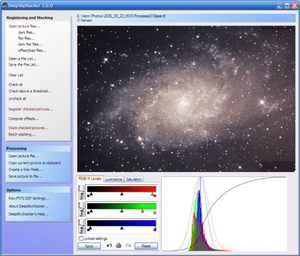
Pleiades Astrophoto's PixInsight Astroimage Processing Software:
Included in this section because it is mostly used for deep sky, however: this program does absolutely everything. It allows totally granular control and has a massive learning curve as a result. It also isn’t cheap, costing about 250 U.S. Dollars...That being said, it’s no rip-off. This is professional-grade astronomy software.
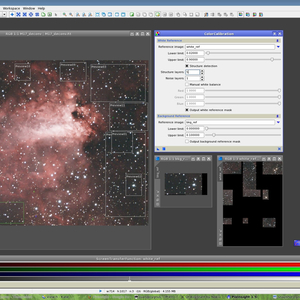
Light Vortex Astronomy’s PixInsight Tutorials:
If you bite the bullet and get this program, with no prior experience it is almost guaranteed to overwhelm. This is stepping from a Cessna cockpit into the Space Shuttle’s bridge. In order to make sense of it all, these tutorials are a stout lifeline.
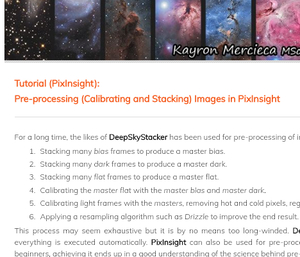
Focal Pointe Observatory's Tutorial on Non-Linear Image Stretching:
The process is described here in Photoshop, but is virtually identical in GIMP. It makes any evidence of structure or color stand out nicely, and there’s a bit of an art to it. This process, it should be noted, will ruin the value of images as scientific data, but if that's what you're after, I imagine you know that already.
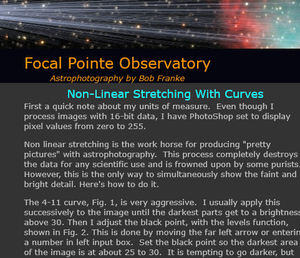
General Use Astro-Image Processing:
This is a collection of software that I've found useful for processing all varieties of astrophotos, as well as daytime photography and art.
The GNU Image Manipulation Program (The GIMP):
A powerful and free general purpose image editing program that is great for polishing your final images, or really doing whatever you like with them. For all intents and purposes, this is Adobe Photoshop's freeware nemesis.
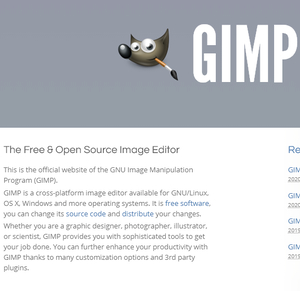
RawTherapee RAW Image Adjustment Software:
What the GIMP is to Adobe Photoshop, RawTherapee is to Adobe Lightroom. A great way to apply a powerful array of adjustments to one RAW photo, or many all at once.
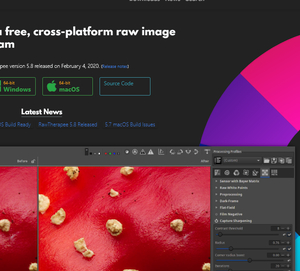
Topaz Labs' Neural Net Photo Enhancement Software:
Along with PixInsight, this is the only costly paid software I would recommend (I hear some people 'steal' software, but that's illegal. Hah! Can you imagine?). It's part of a relatively new and powerful variety of software. Trained with machine-learning on countless photos, it can intelligently discern with decent accuracy which part of the picture is noise, and what is really the subject, before removing the noise. That said, this also disqualifies modified data from use in scientific research; it’s intelligent software, but not always genius.
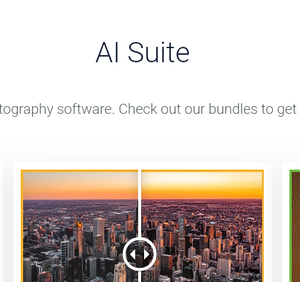
Astronomy and Astrophotography Miscellanea:
A general category, for everything else.
AstroBackyard:
An affable Canadian and veteran in the hobby, Trevor Jones maintains this site full of extremely insightful articles, videos, and gorgeous images to boot.
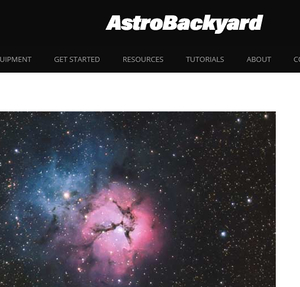
Dr. Roger N. Clark's ClarkVision.com:
Dr. Roger N. Clark (bae) may have a website that looks like it belongs to a Xerox retailer from the 90’s, and he may write a bit drily, but the man has a jaw-dropping and peerless mastery of every technical aspect of photography, astronomical and otherwise. This site contains his accumulated wisdom on those matters, and is a resource in a league of its own. He is not a hobbyist, this is simply a part of his life’s work as a photographer, professional astronomer, physicist, and ecologist with over 300 published papers and numerous significant discoveries to his name.
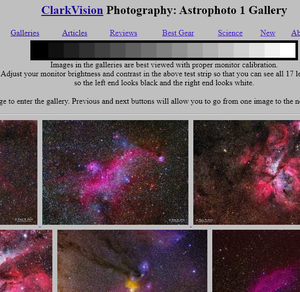
Sky & Telescope Magazine's Home Page:
One of the largest and most successful magazines on astronomy, for good reason. Always a good read and no paywalls, which is an increasing rarity for magazines, sadly.
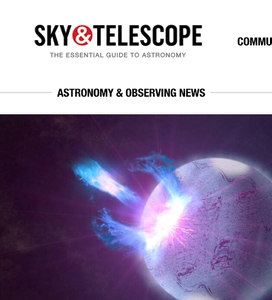
Sky at Night Magazine's Home Page:
Much like the aforementioned organ, a popular and respected magazine on astronomy, published by the BBC. Takes its name after a documentary series that aired on BBC TV, and it worth seeking out online.
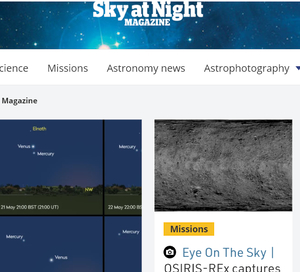
Carl Sagan's "Cosmos: A Personal Voyage" (1980):
This old PBS series (and after, Sagan’s larger body of work) is what kindled my passion for space. To this day, I find it unmatched in the eloquence, humility, and humanism with which it deftly explores the mysteries of the universe. The entire series is now free on Youtube, and if you’ve never seen it, you should fix that immediately. Tyson’s modern reboot is (aside from being hosted by a probable sexual predator) a completely epigonic work by comparison, and should be ignored.
EDIT: Youtube has since removed this upload of the series due to copyright infringement, which I object to in the strongest terms (to clarify I object to the removal of content that was released for the public by a publically funded body from a public means of access, not the 'infringement' claimed by some Scrooge-like profiteering ghouls.) I leave the entry up so that others might still seek the series out on their own terms.
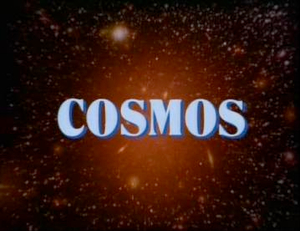
Elevators.com's Resource Page on Space Elevators
This is a very special entry for me, as it was recommended by an educator who had found my site useful in a lesson about astronomy and a student who found the linked page and suggested passing the link on to me. I had no clue people even found the site, let alone found it useful! A huge thank you to Kelly and Amelia!
Aside from being tickled by the existence of a site dedicated to the very concept of elevators of all kinds(on the face of it at least, they seem to also be a business), this is a very dilligently collected and thorough directory (many thanks to Andy Darnley) of reading material about the concept of the space elevator. More than just a fanciful invention for speculative fiction, it represents an entirely feasible means for humanity to revolutionize the whole human endeavor of spaceflight, and if we don't destroy ourselves (or the integrity of low-earth orbit with debris) before such a time: it will almost certainly represent a critical milestone in becoming a truly interstellar species.
